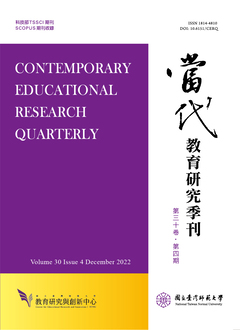

研究目的
本文以 J. Bruner 於 1972 年所撰〈未成熟狀態的性質與運用〉為主要文本,探討人類未成熟狀態論的核心要旨與教育啟示。
研究設計/方法/取徑
本文採取文本分析方法,遵循詮釋學循環的原理,闡明其未成熟狀態論的要旨,並配合其他有關文獻,於進行述評之後,探討其對教育的啟示。
研究發現或結論
人類的長期未成熟狀態是「人之所以為人」的關鍵,這段時期讓人類得以透過學習強化適應力,這種能力融合同化與順應。人類會藉助文化工具來放大感官與肌力,這些文化的「放大器」提升了人類的生存能力。而人類社會的互惠交換與靈活組織也延長了遊戲期,使成人更多參與幼兒發展,促進觀察型學習。人類幼兒的可教育性遠高於其他靈長類動物。
在未成熟狀態的「運用」方面,幼兒主要透過觀察與遊戲學習工具使用。遊戲的特點是目的與手段連結鬆散,常發生在安全、熟悉的環境中,具備自我激勵與探索新行為的功能。由於工具使用在演化中的重要性,幼兒需透過反覆練習與模仿來掌握這項能力。人類成人不只是榜樣,也主動設計活動引導幼兒學習,藉由儀式、符號與語言傳遞知識。語言原為行動中的溝通工具,後經演化,特別是書寫系統,成為獨立的知識傳遞媒介,建立起學校教育的基礎。
本文也引述當代學者的理論來擴充 Bruner 的觀點。D. F. Bjorklund 等人提出「發展適應說」與「延緩型適應價值」,認為幼兒表面上的認知缺陷有助於心智可塑性、減少無助感並促進認知統整與社會化,具適應優勢。M. Tomasello 則以文化演化為視角,提出「文化學習與蛻變成人」理論,指出人類的發展仰賴成熟度、社會文化經驗與自我調節能力,凸顯人類合作與符號學習的特質。
研究原創性/價值
早期學者雖關注人類有較長未成熟狀態及其可塑性與可教育性,但相關的論述多限於哲學思辨。Bruner 則以哈佛大學「娃娃實驗室」研究成果及靈長類文獻為本,對此主題進行了更深入的實證探討,深化了人類未成熟狀態的可教育性觀點,開啟其後學界在技能的學習與教學、兒童遊戲及思考與語言的發展、語言習得、幼兒教育、文化心理學,乃至演化發展心理學等領域研究,更引導實務應用與後續研究,凸顯本研究的價值性。
教育政策建議或實務意涵
本文歸納出三項教育啟示:執行的自我調節能力為一般教育原則的重中之重;學前教育宜推動適合於兒童發展的本然學習而非過早施予直接的學業教導;學校教育宜重視關聯性與激發學生的參與。最後,指出一些與 Bruner 有直接關聯且值得深入主題,如 Bruner 對於遊戲與思考及語言的關係,以遊戲做為嬰幼兒理解世界的管道,語言習得理論,以及有關符號與書面語言或文本,兒童如何發展其敘事思考的能力、嬰幼兒教育的理論與實務等,皆值得繼續研究。
Purpose
This study focuses on Jerome Bruner’s 1972 essay titled, “The Nature and Uses of Immaturity” to examine the central tenets of the theory of human immaturity and its educational implications.
Design/methodology/approach
The present research applies the textual analysis method to perform a comprehensive literature review. It follows the hermeneutic cycle principle, analyzes the essay’s central arguments, and discusses its implications for education.
Findings/results
A prolonged state of immaturity renders a human being human. During this state, humans improve their adaptive capacity through assimilation and conformity. They employ cultural “amplifiers” to develop their senses and muscles, which promotes their survivability. The reciprocal exchanges within, and flexible organization of, human societies extend the play period, enabling adults’ greater involvement in the development of young children, thus facilitating observational learning. The educability of young human children is considerably higher than that of other primates. In the immature state of “use,” young children learn to employ tools primarily through observation and play. Play is characterized by a loose connection between ends and means, often occurs in safe, familiar environments, and facilitates self-motivation and exploration of new behaviors. Owing to the evolutionary importance of tool use, young children acquire this skill through repetition and imitation. Adults—the role models—design activities to guide children’s learning, use rituals, symbols, and language to convey knowledge. Language was originally a tool for communication in action. Over time, it has evolved, especially in the writing system, as an independent medium of knowledge transfer, and forms the basis of the modern school system. This study cites contemporary research to expand Bruner’s viewpoint. D. F. Bjorklund et al.’s “Developmental Adaptation Theory” and “Value of Delayed Adaptation” suggest that the apparent cognitive deficit of young children can facilitate mental plasticity, mitigate the feeling of helplessness, and promote cognitive integration and socialization, which is an adaptive advantage. M. Tomasello’s theory of “Cultural Learning and Transforming Adulthood,” derived from the perspective of cultural evolution, indicates that human development relies on maturity, social and cultural experiences, and self-regulation, and highlights the characteristics of cooperative and symbolic learning.
Originality/value
Research regarding the prolonged immaturity of human beings, their plasticity, and educability, has been mostly philosophical in nature. Based on the findings of Harvard University’s “baby lab” and the literature on primates, Bruner conducted a nuanced empirical exploration of this topic, augmenting the knowledge regarding the educability of human beings. This informed subsequent research in the areas of skill learning and teaching, children’s play and thinking and language development, early childhood education, cultural psychology, and even evolutionary developmental psychology, leading to practical applications. These factors highlight the value of this study.
Implications for policy/practice
This research summarizes three educational lessons: the importance of self-regulation as a general educational principle; the desirability of pre-school education to promote developmentally appropriate natural learning rather than direct academic instruction; and the desirability of school education to emphasize relevance and to stimulate student participation. A few investigation-worthy topics, which are directly related to Bruner’s work, are indicated. For example, Bruner’s perspective of the relationship between play and thinking and language, play as a conduit for infants’ cognitive development, theories of language acquisition, as well as theories and practices related to symbols and written language or texts, how children develop their ability to think narratively, and theories and practices of infant and toddler education.

本著作係採用創用 CC 姓名標示-非商業性 3.0 台灣 授權條款授權.
本刊國立台灣師範大學教育研究與創新中心
106台北市和平東路一段162號 | 電話: 02-7749-3670 | E-mail: cerecerq@gmail.com
教創中心 | 師大 | 電子報 | 線上投審系統
本刊由國家科學及技術委員會人文社會科學研究中心補助經費
© 2014 CERI-NTNU
